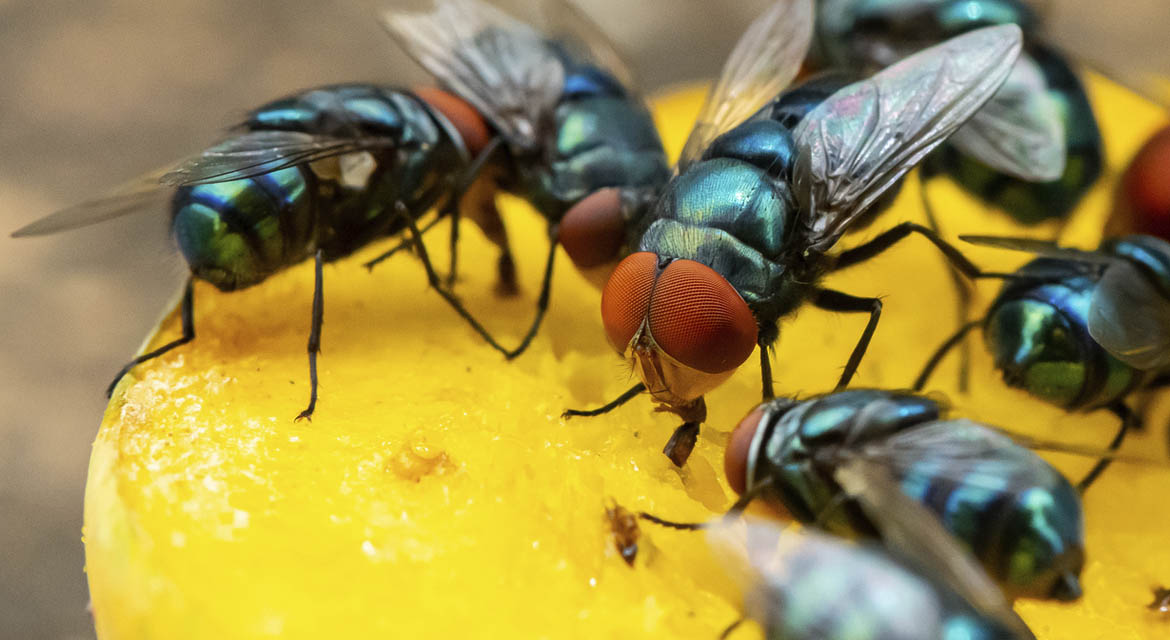Fly Facts & Information
Fly Overview
Flies are a diverse and ubiquitous group of insects that play both beneficial and nuisance roles in ecosystems worldwide. With over 150,000 described species, they exhibit remarkable diversity in size, shape, and behavior. Characterized by their distinctive two-winged appearance, flies are known for their incredible agility in flight, thanks to their specialized wing structure. While some flies are essential pollinators in ecosystems, helping to fertilize plants and sustain biodiversity, others, like houseflies and mosquitoes, are notorious for their role as vectors of disease transmission. Flies undergo complete metamorphosis, starting as eggs and progressing through larval and pupal stages before emerging as fully developed adults. Their adaptability, ecological significance, and intriguing biology make flies a fascinating subject of study for entomologists and a constant presence in the everyday lives of people around the world.
What do Flies Look Like?
Flies display a diverse array of physical characteristics, but they share some common features that distinguish them from other insects. One of the most distinctive traits is their two-winged appearance, as flies belong to the order Diptera, which means “two wings.” These wings are typically transparent and veined, allowing for agile and rapid flight. Flies also have large compound eyes that often occupy a significant portion of their head, providing them with excellent vision. Their antennae vary in shape and length, with some being short and inconspicuous, while others are longer and more prominent. Most flies have a relatively small body, often oval or elongated in shape, and their coloration can range from dull and inconspicuous to striking patterns and metallic hues. Fies possess mouthparts designed for sponging or piercing, depending on their feeding habits, such as the proboscis of a mosquito or the sponging mouthparts of a housefly. These diverse physical traits contribute to the wide variety of fly species found worldwide.

Not the pest you are looking for?
Check out our pest library to see what other pests we have articles on
Fly Pest Control
Fly pest control is essential for maintaining hygiene and preventing the spread of diseases in homes, businesses, and agricultural settings. Effective fly control methods typically involve a combination of preventive measures and targeted interventions. Prevention includes eliminating breeding sites by keeping trash bins covered, cleaning up food spills, and maintaining good sanitation practices. Installing screens on doors and windows can help keep flies out. In cases of infestations, fly traps, fly paper, and electronic zappers are commonly used to reduce fly populations. Chemical pesticides, such as fly sprays or baits, may also be employed, but these should be used cautiously to minimize environmental impact and ensure safety for humans and pets. Integrated pest management (IPM) strategies that combine multiple approaches, including biological controls like parasitoid wasps, can provide sustainable, long-term solutions for fly control while minimizing the use of chemicals. Regular monitoring and prompt action are crucial to effectively manage fly infestations and maintain a pest-free environment.

